Meet the Honda Navi, one of the least expensive bikes currently available in Australia.
I’m sitting in the starter’s hands about to launch. I increase the revs but squeeze both brakes on hard so that the CVT transmission doesn’t lurch me forward. My first obstacle in what I’m going to call the Half-Harted Gymkhana is to hook a full loop around a tight-ish circle of witches hats while Honda’s marketing coordinator Sophie Munday stands in the centre shooting two fully loaded quick-fire Nerf guns at me before I spear off to tackle the slalom on the new Honda Navi.
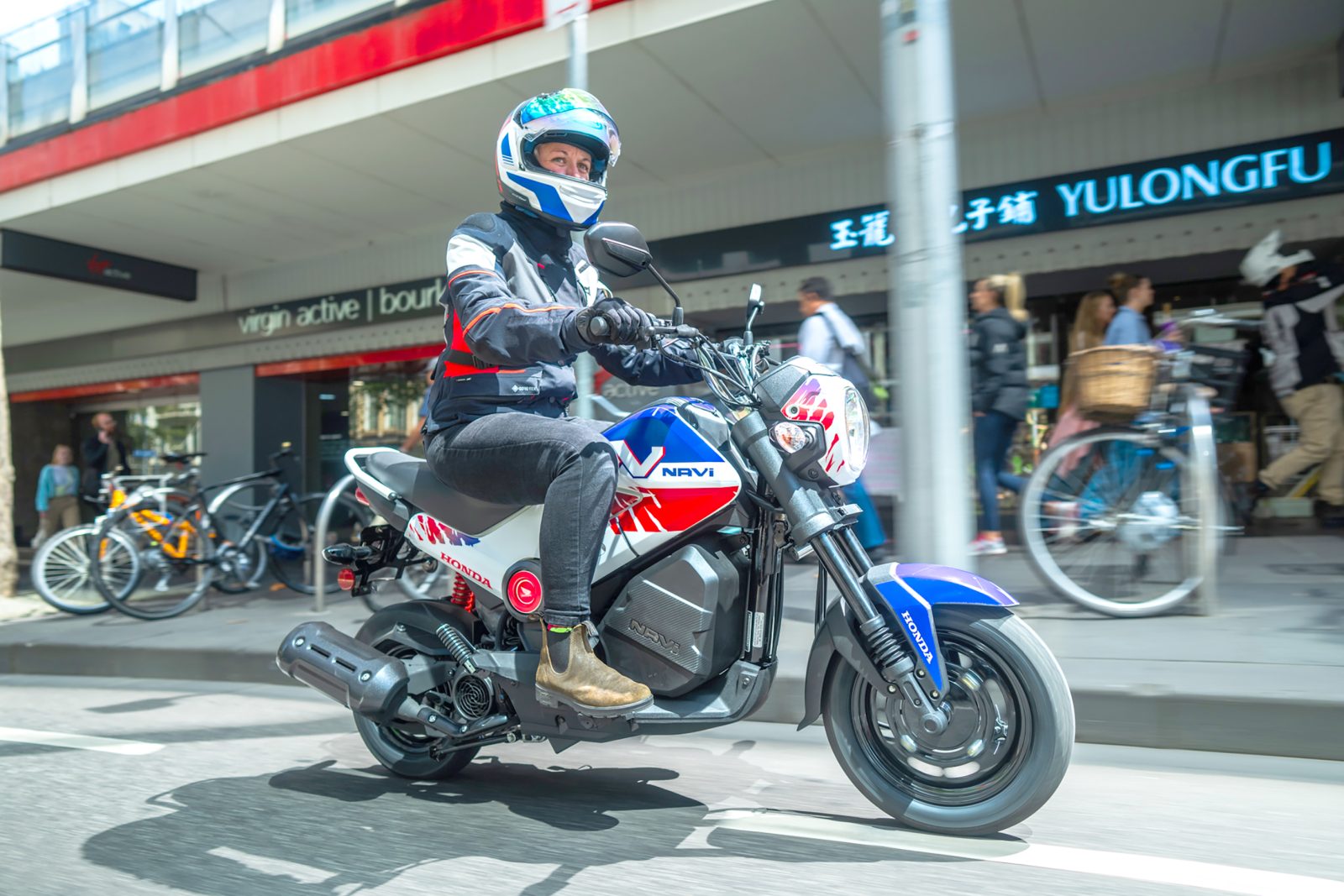
I’m calling it the Half-Harted Gymkhana because not only is it being held on Honda’s HART training range in the outer northern suburbs of Melbourne, but we’re riding Honda’s newly introduced pint-sized runabout that feels like it’s about half the size of a regular bike.
I reckon I could have ridden around that first loop quicker if I had dragged only the rear brake, but the NAVi’s drum brakes either end are linked, meaning the front brake was being applied at the same time as the rear, which was working against what I was trying to achieve. That’s what I told myself anyway when I fell short of the win.
Once out of the slalom, we had to stop, switch the bike off and put it on the standard-fitment centrestand before kicking a ball into a makeshift goal to earn (or lose) points off your total score. And not only did I miss the goal, with no conventional kill switch to speak of I failed to remember that I needed to switch the ignition back on before completing another required task of kickstarting the engine back into life.
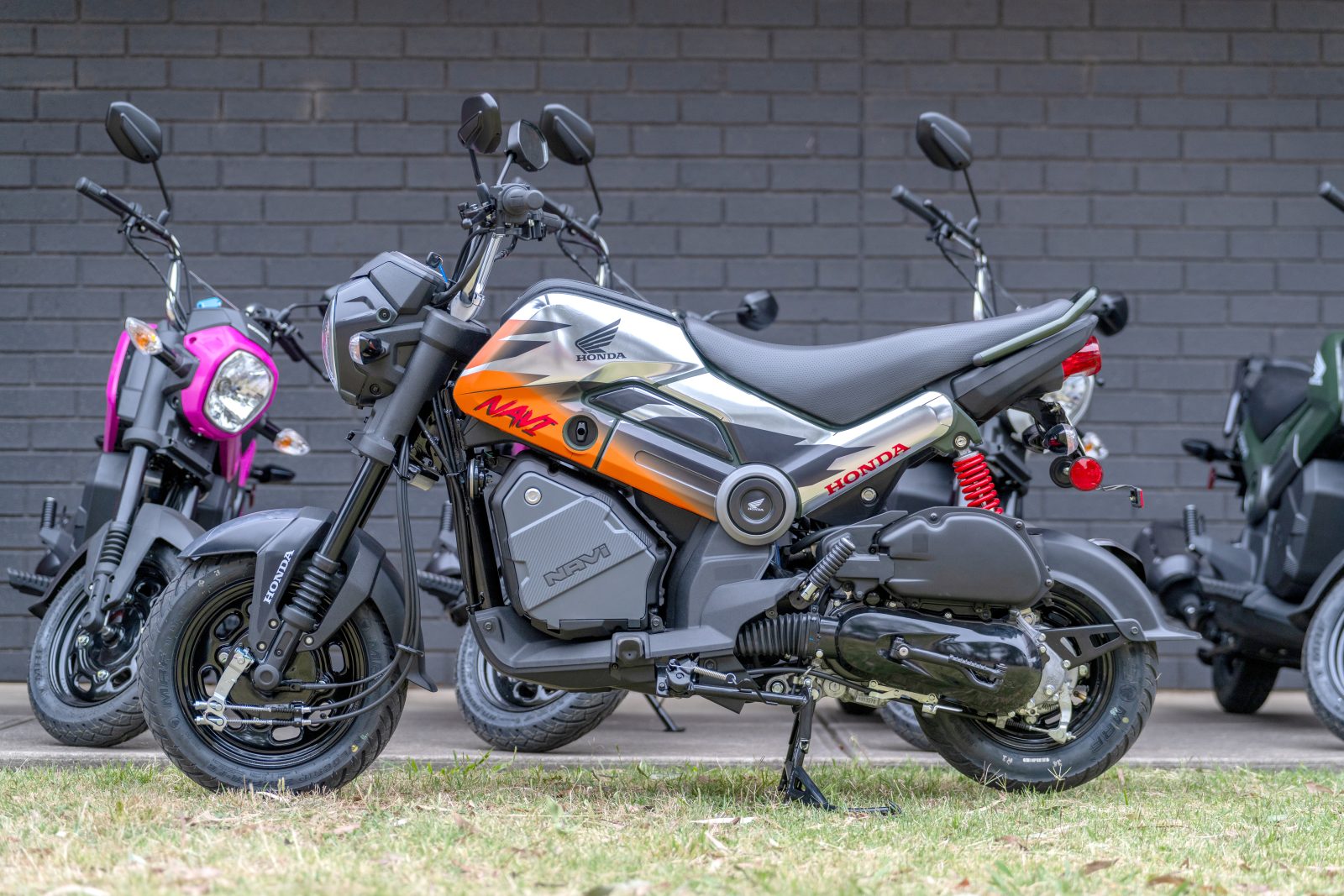
The humble runabout starts to look a bit urban cool with the Fireblade-inspired graphics kit
Once I’d switched my brain (and the key) on, the 109cc single-cylinder engine fired into life on the first kick. I swung it off the centrestand and accelerated towards another slalom obstacle, this one a bit trickier, before riding towards three small hoops hanging on a hat that I needed to grab, separate and toss onto three different witches hats – without stopping or putting my feet down.
The resounding ‘failure… failure… failure!’ from the commentator lets you know where my hoops ended up – the low-speed, one-handed operation of the NAVi is a cinch – just turns out I’m not a very good aim.
As much fun (and failure) as the gymkhana was, of course it was a really clever move from Honda to highlight features and benefits of the 100kg NAVi that we may not have otherwise used or tried during the short test ride period; kickstarter and centrestand both great examples.
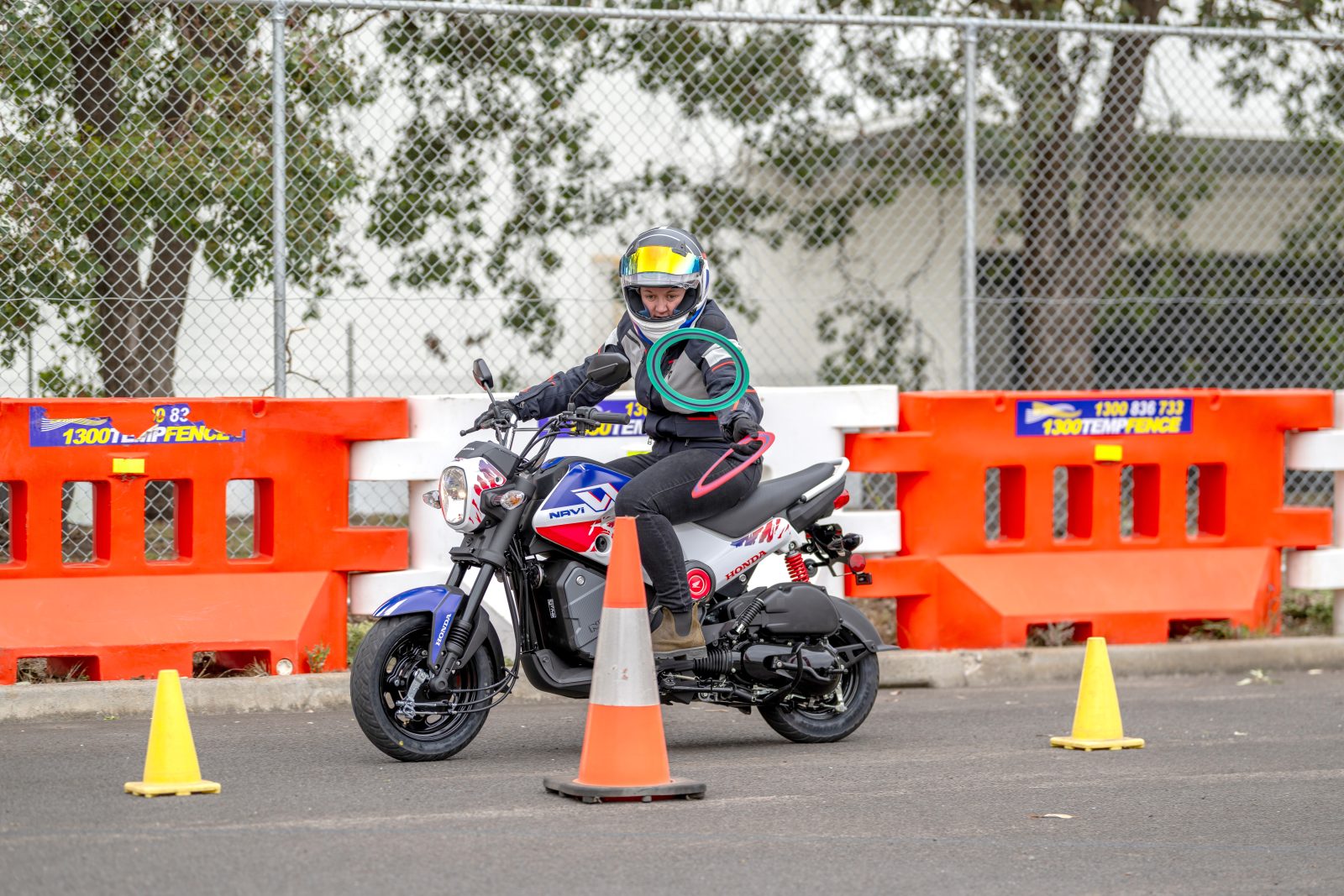
The test ride started with a run around a gymkhana course where brainpower and motive skills were put to the test
But for me, the most impressive feature of this new commuter is its price. With a recommended retail price of $2349 (plus on-road costs), urban mobility just got a whole lot more achievable for would-be riders, especially when you only need a scooter licence to ride it (ACT, Tas and Vic).
As well as the twist-and-go transmission, the NAVi uses an ‘underbone’ or scooter-style chassis – presumably based around one of Honda’s scooter platforms and one of the reasons why it’s priced so sharply – and the fan-cooled engine is a hub-mounted affair. Because the NAVi swaps traditional scooter styling with a nakedbike look, there’s space beneath the petrol tank which has been filled with a plastic 17.5L lockable storage compartment. Honda says the compartment is waterproof. Beautiful Melbourne weather meant I wasn’t able to test that claim but I can confirm the compartment fooled more than a few onlookers into thinking the NAVi was an electric bike when we headed into the CBD at the conclusion of the gymkhana.
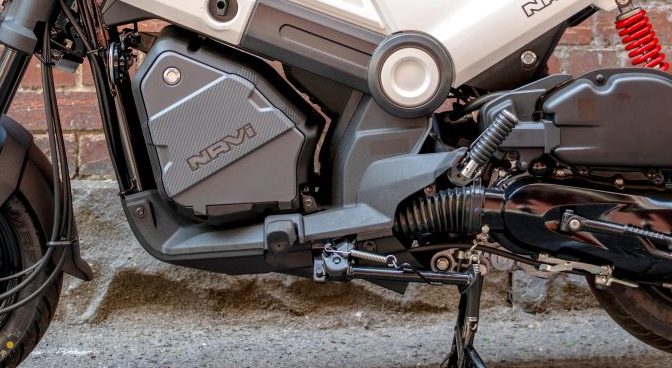
What looks like it could be some sort of battery powerplant is actually weatherproof storage
From what I can tell, Honda Australia has welcomed the NAVi into the fold in a bid to try and recoup some of the losses felt by the discontinuation of its popular Grom. This cute 125cc runabout garnered a pretty significant following in Australia due to the novelty (and practicality) of its small size and fun styling, but was pulled from the market towards the end of 2022 when its single-channel ABS system didn’t comply with the two-channel system required by our Australian Design Rules. Although sales were relatively strong Down Under, the relative size of the Australian market compared to the rest of the world just wasn’t big enough to justify an update in order to meet the specific requirements of our ADRs.
So that’s where the NAVi comes in. Yes, it has less tech; it’s carburettor-fed instead of fuel injected, it uses a couple of drum brakes instead of discs, there are incandescent lights instead of LEDs, an analogue dash instead of an LCD affair, and the list goes on, but you can’t argue that the novelty of the NAVi isn’t as pronounced as the Grom.
In fact I reckon it’s got more novelty swagger than the Grom has – and that’s before you take into account the two optional retro-Fireblade inspired sticker kits that you can choose over the four standard colours.
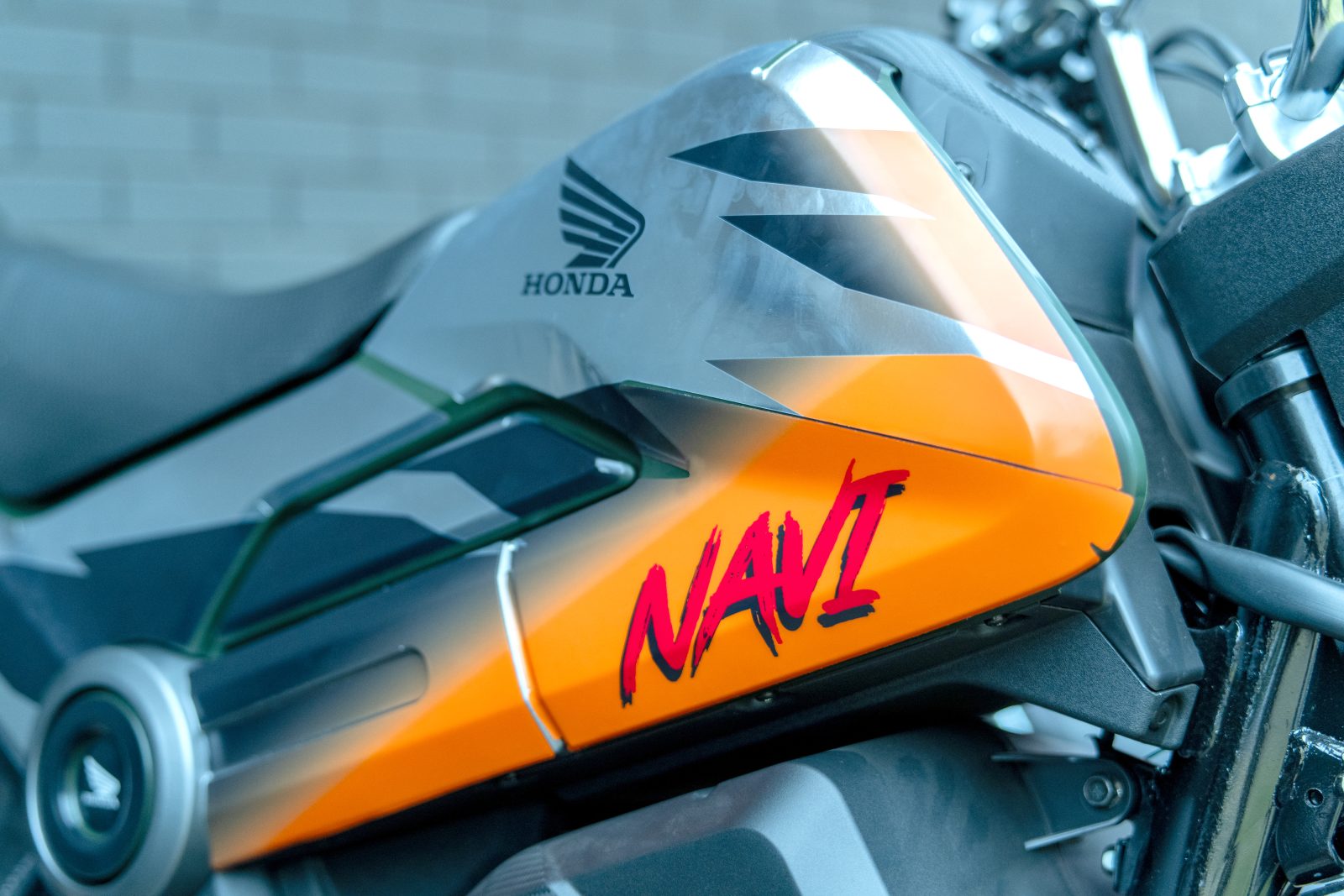
This is inspired by the 1994 CBR900RR Fireblade Tiger
It won’t get kneecapped like the Grom did because a two-channel ABS system is only a requirement on machines 125cc or larger.
Despite having a 10-inch rear wheel matched to a 12-inch front, you still sit high enough on the 765mm seat to see above the traffic – for context both the Royal Enfield Himalayan 450 and the Triumph Speed Twin 900 have a 765mm seat height – and the high handlebar results in upright and comfortable ergonomics.
The footpegs are mounted slightly more forward than where my feet often went looking for them, although with Honda’s V-matic CVT transmission and the ’bar-mounted brake levers, there’s no reason you couldn’t opt for a sportier stance and place your feet on the fold-out pillion ’pegs, which aren’t that far removed from where they might be if a fully-faired sportsbike version of the NAVi existed.
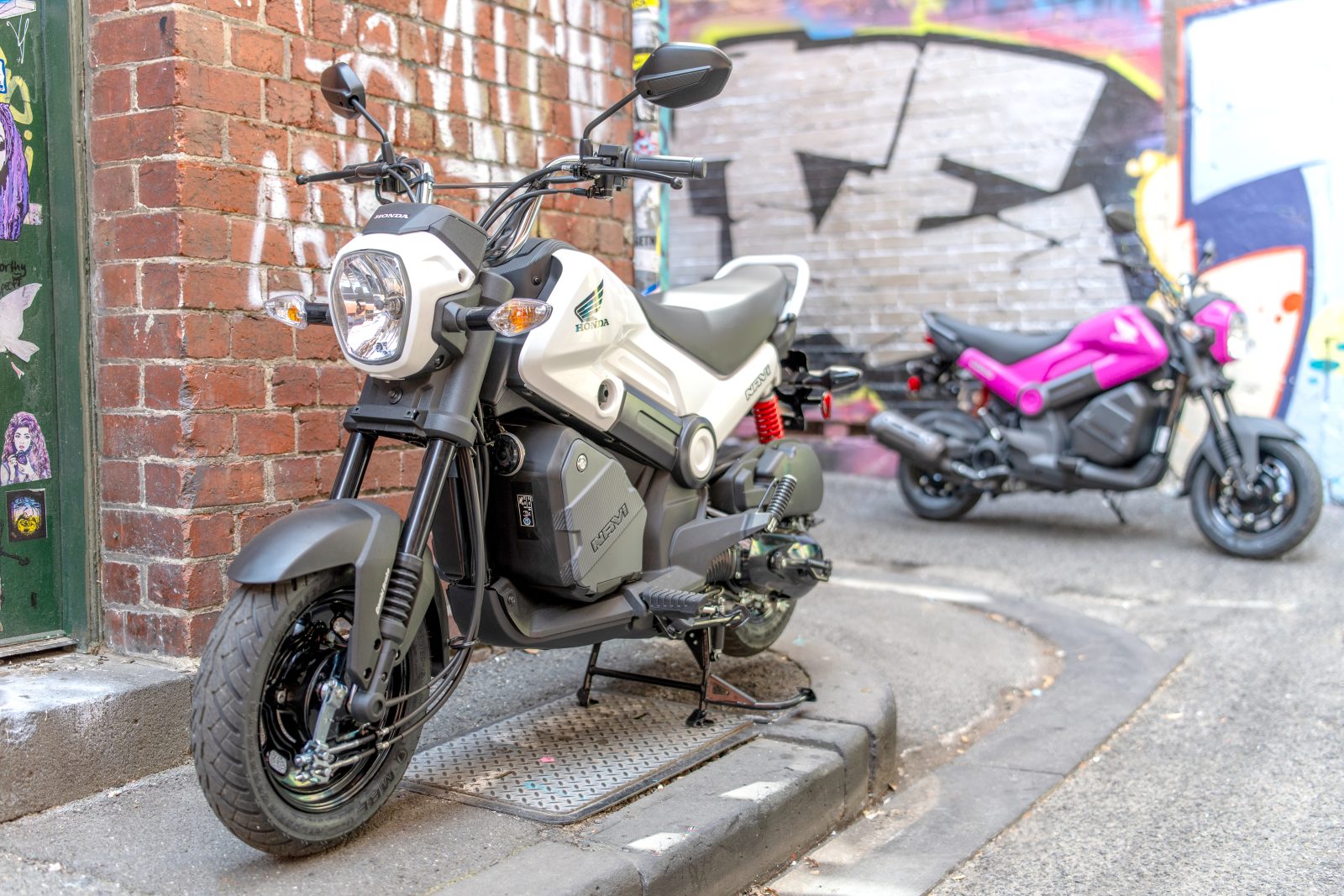
Speaking of the pillion ’pegs, the NAVi is more than capable of ferrying two people around town.There’s a generously sized pillion seat as well as a rear grab handle. That seat, grab handle and ’pegs will no doubt also perform tie-down roles if and when the bike’s 17.5 litres of onboard storage is exhausted, but there should be a handy little rear rack available (see breakout) in the accessories catalogue too, which can increase the bike’s practicality even more.
Thumb (or kick) the NAVi into life and it sounds every bit the small-capacity scooter it’s been built around. The single-cylinder two-valve air-cooled engine runs a single overhead camshaft and is good for a claimed 6kW (8hp) and 9Nm at 7500rpm and 5000rpm respectively. Acceleration from the 100kg (kerb, claimed) bike is brisk enough to hurtle you ahead of the pack once you’ve filtered your way through to the front with ridiculous ease, too. However its top-speed capability will prevent all but the brave and silly from heading towards freeway on-ramps. I saw 85km/h at one point on my short urban ride, but I was travelling down hill – not a steep decline, but a decline nonetheless.

Every bit a motorcycle, although it’s based on a scooter
Despite the scooter-style chassis, you don’t feel any of the flex or vagueness often associated with small-capacity scoots and I suspect this is because of the brace effect of the seat and fuel tank tying each end of the underbone chassis together.
The 26.8mm non-adjustable upside-down telescopic fork and the single offset rear shock offer 89mm and 70mm of travel respectively, which all adds up to more than adequate suspension performance for the role the NAVi is designed to play.
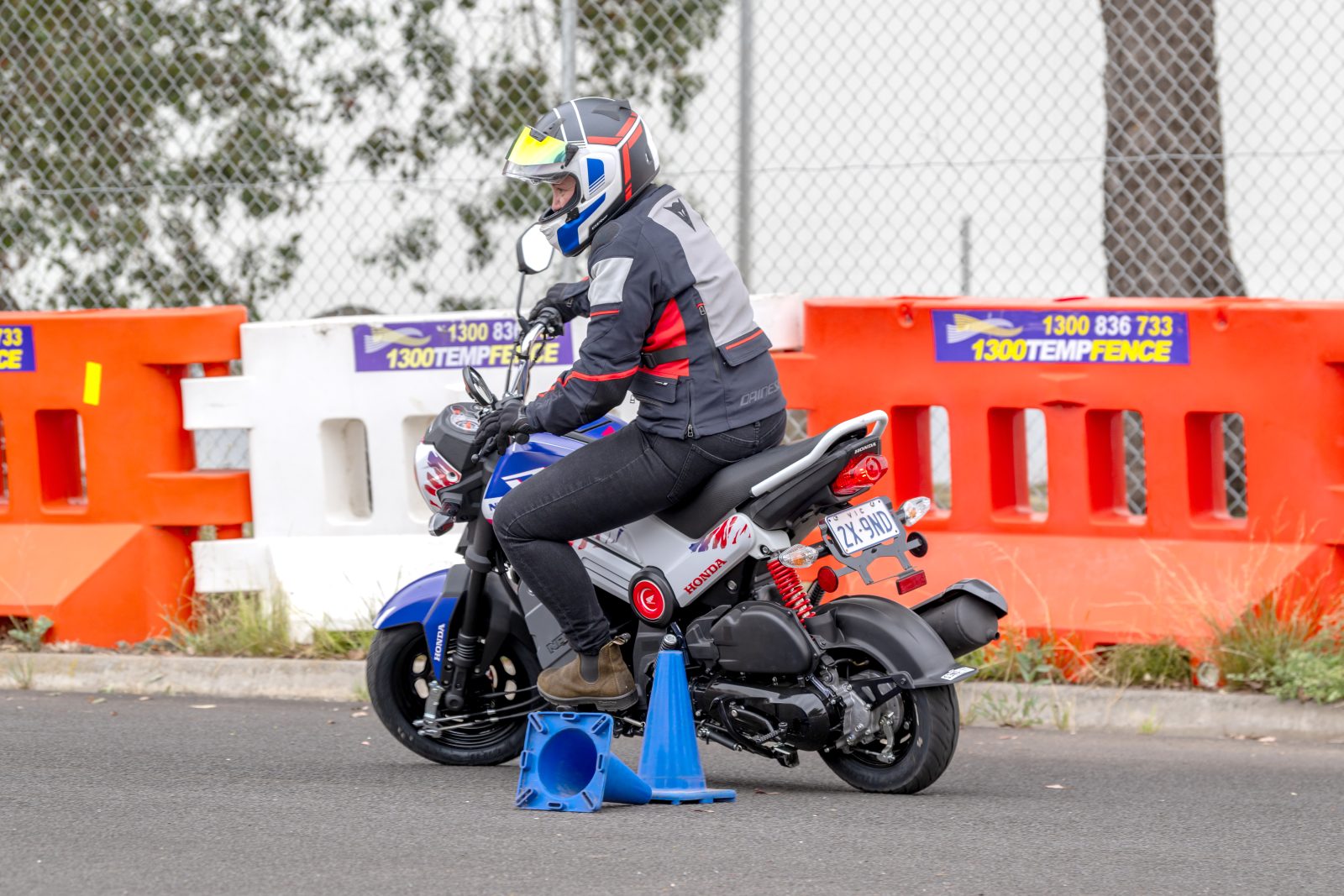
If you’re underwhelmed by any area of the NAVi’s performance, you’re probably missing the point of what Honda’s trying to do, which is making urban mobility affordable and achievable for just about everybody. And if it just so happens that the NAVi forms a cult following like the Grom, Monkey or as far back as the QR or Z50s have done, then that’s a bonus.
PROS: It’s packed full of practical features and it’s ridiculously affordable.
CONS: Styling may be slightly awkward to some eyes and it’s not suitable for freeway riding.
WORDS: KELLIE BUCKLEY PHOTOGRAPHY: ROB MOTT
SPECS
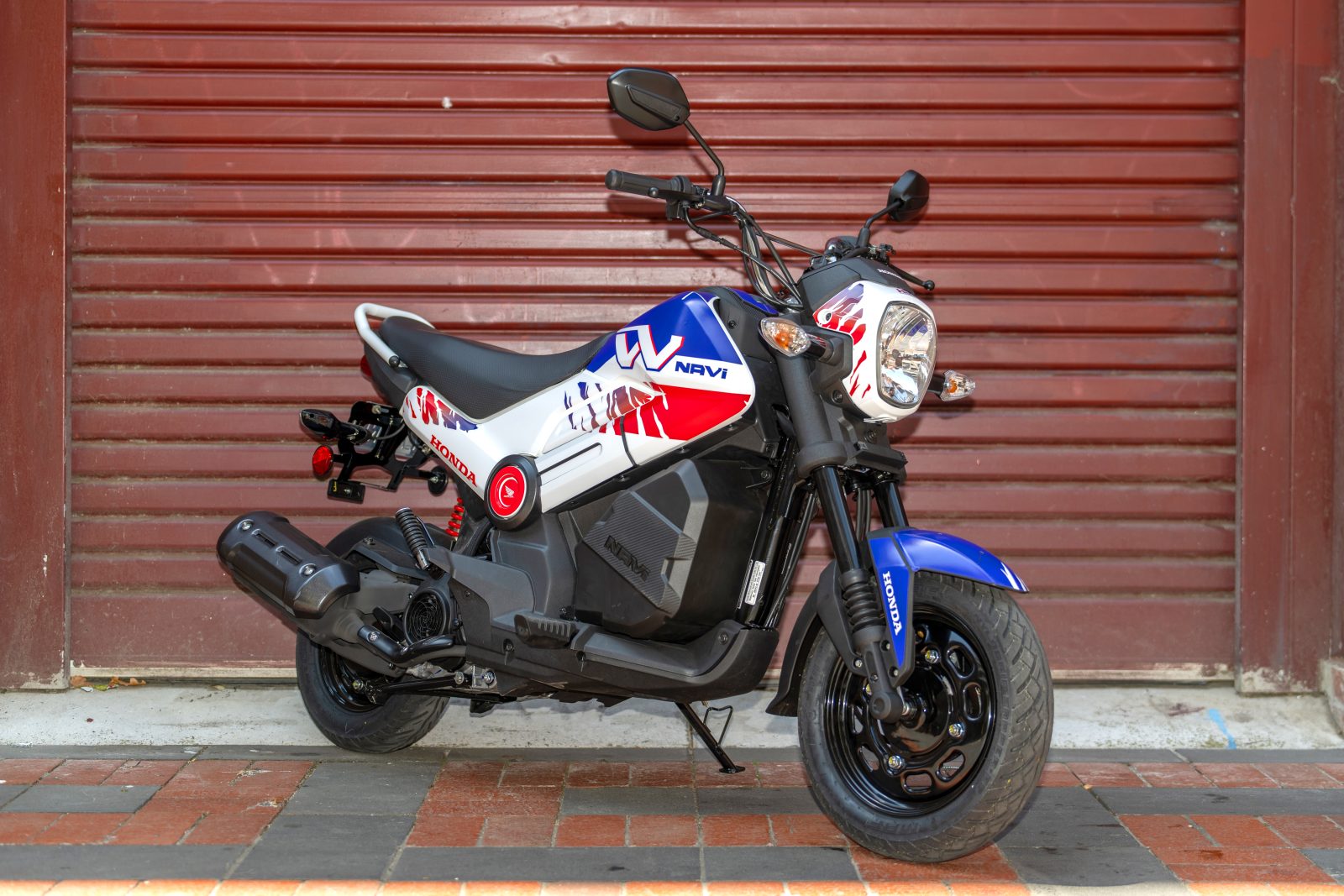
ENGINE
Capacity 109cc
Type Single cylinder, SOHC, two valves
Bore & stroke 50mm x 55.6mm
Compression ratio 9.5:1
Cooling Fan
Fueling Carburetor
Transmission CVT
Clutch Centrifugal
Final drive Belt
PERFORMANCE
Power 5.89kW (8hp) @ 7500rpm (claimed)
Torque 8.91Nm @5000rpm (claimed)
Top speed 90km/h (measured)
Fuel consumption 2.1L/100km (claimed)
ELECTRONICS
Type Not applicable
Rider aids Combined braking
Rider modes Not applicable
CHASSIS
Frame material Steel
Frame type Underbone
Rake Not given
Trail Not given
Wheelbase 1286mm
SUSPENSION
Type Not given
Front: 26.8mm, non-adjustable upside-down fork, 89mm travel
Rear: Single shock, non-adjustable, 70mm travel
WHEELS & BRAKES
Wheels Steel
Front: 12 inch Rear: 10 inch
Tyres Nylogrip Zapper
Front: 90/90-12
Rear: 90/100-10
Brakes
Front: Drum, combined
Rear: Drum, combined
DIMENSIONS
Weight 100kg (kerb, claimed)
Seat height 765mm
Width Not given
Height Not given
Length 1805mm
Ground clearance 156mm
Fuel capacity 3.5L
SERVICING & WARRANTY
Servicing First: 1000km
Minor: 4000km
Major: 12,000km
Warranty Two years,
unlimited kilometres, roadside assist
BUSINESS END
Price $2349 (plus on-road costs)
Colour options Sashta White, Patriot Red, Ranger Green or Neon Pink
Contact motorcycles.honda.com.au